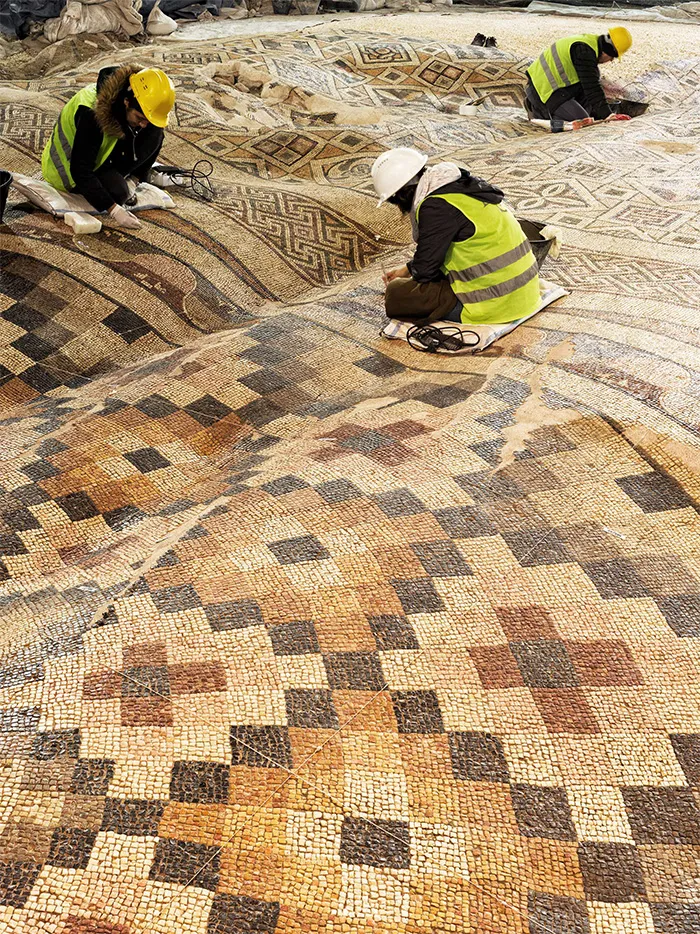
Ancient Roman mosaic, buckled by earthquake, https://www.world-archaeology.com/features/discovering-roman-mosaics/
During the battle of Waterloo, Wellington, the British commander, is reported to have said to his staff, “I saw this ground last year, and kept it in my back pocket since.” (https://gjscloset.wordpress.com/2011/05/24/meet-your-waterloo/) Meaning that his keen military mind had made note of the tactical possibilities of the topography beneath the stretch of road between La Belle Alliance and Waterloo. If only he could lure an enemy onto it. I’m not a great general like Wellington. Or even a bad one like Jubal T. Cornpone, the fictional Confederate general who was so incompetent that Lincoln praised him for helping the North win the Civil War. (https://en.wikipedia.org/wiki/Li’l_Abner) But, as a writer, I benefit by imitating one of his habits. I keep things in my back pocket as well.
At the time Wellington first saw his precious ground, he wasn’t fighting anyone. The generation-long Napoleonic Wars had just ended, and Bonaparte was safely exiled to the island of Elbe. Or, so everyone thought. Then, Napoleon escaped his exile, landed in France and headed north, Frenchmen enthusiastically flocking to his banner like moths to a flame. Even though the war was over, Wellington, the old soldier, simply couldn’t turn off that part of his mind. It’s akin to a doctor always observing the health of people outside the office, or a plumber subconsciously noting the probable locations of piping runs lurking behind walls when entering a building.
As a writer, I find myself engaging in equivalent behavior. Everything I see, hear of read lodges in my brain, drifting to the bottom like sediment in a lazy river. And, I can never predict when a factoid will be dredged up and prove useful. My first published novel, A Grand Imperial War, grew from an account of the unlikely events which precipitated Anglo-Persian War of 1856. My third novel, Fool’s Paradise, was inspired by an early-career George RR Martin book, The Dying of the Light, a murder mystery set in a largely-abandoned city on a dying world. (https://en.wikipedia.org/wiki/Dying_of_the_Light_(Martin_novel)) Although I read Dying of the Light in the 1970s, the concept of a desperate conflict on a once-opulent world lurked in the back of my head for decades until stepping forward at just the right moment.
That is the true value of a writer reading and watching a lot of crazy stuff. You never know what’s going to turn out useful, even inspirational. Your brain has to masticate it all in the background, making connections you’d never believe possible. After a while, you get a vague sense of what might feed that mill best. The photo accompanying this post gives off that scent. It’s a of a 2000-year-old Roman mosaic floor, the ground under which has buckled in some medieval earthquake. Instead of cracking open, the mosaic rolled, taking on the illusion of a rug thrown over rumpled ground.
How might I use this imagery? I can’t tell you right now. Perhaps it will provide a metaphor for ancient, arcane knowledge, persisting over millennia of turmoil. Maybe a temple acolyte will simply be annoyed that he has to clean the blood of sacrifices from the hilly terrain of mosaic surrounding an altar. Who can say? I’ll just keep it in my crowded back pocket, against the chance I can lure a story onto that ground.
